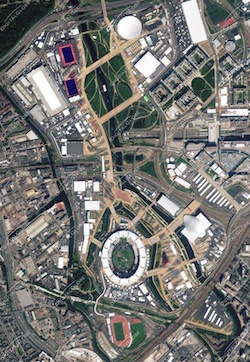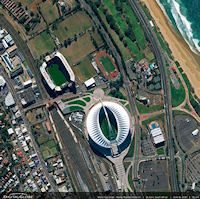
For news editors who need pictures to cover breaking stories, Vizrt has launched a new service that gives subscribers access to DigitalGlobe’s vast satellite image library. Part of the DigitalGlobe Online service is FirstLook, which is claimed to be a faster, more cost-effective way to capture events from around the world. As the name implies, Vizrt customers will get a first look at images captured by one of DigitalGlobe’s three commercial satellites. When a major event takes place, DigitalGlobe activates the service by positioning satellites at the location to take new high-resolution images. Within hours these images are available to all DigitalGlobe Online customers with the option to purchase. Customers are sent notifications from Vizrt when this happens to give them the first look. Already the service has been used to provide images from the Olympics, a typhoon in the Pacific Northwest and the Hungarian Grand Prix. As well as using the pictures in graphics, with Viz World designers can manipulate FirstLook satellite imagery to create animated maps, or use aligned images captured before, during and after an event to show how it developed. “Our collaboration with Vizrt is a natural fit for DigitalGlobe, because television broadcasters are a primary market for our high-resolution digital satellite imagery,” said Andrea Bersan, international vice president at DigitalGlobe. “Being first to air with valuable content is a key objective for any competitive broadcast news organisation. For reports on perilous events, like a nuclear power plant accident or tsunami, FirstLook can give everyone a birds-eye view from the safety of an orbiting satellite.”







